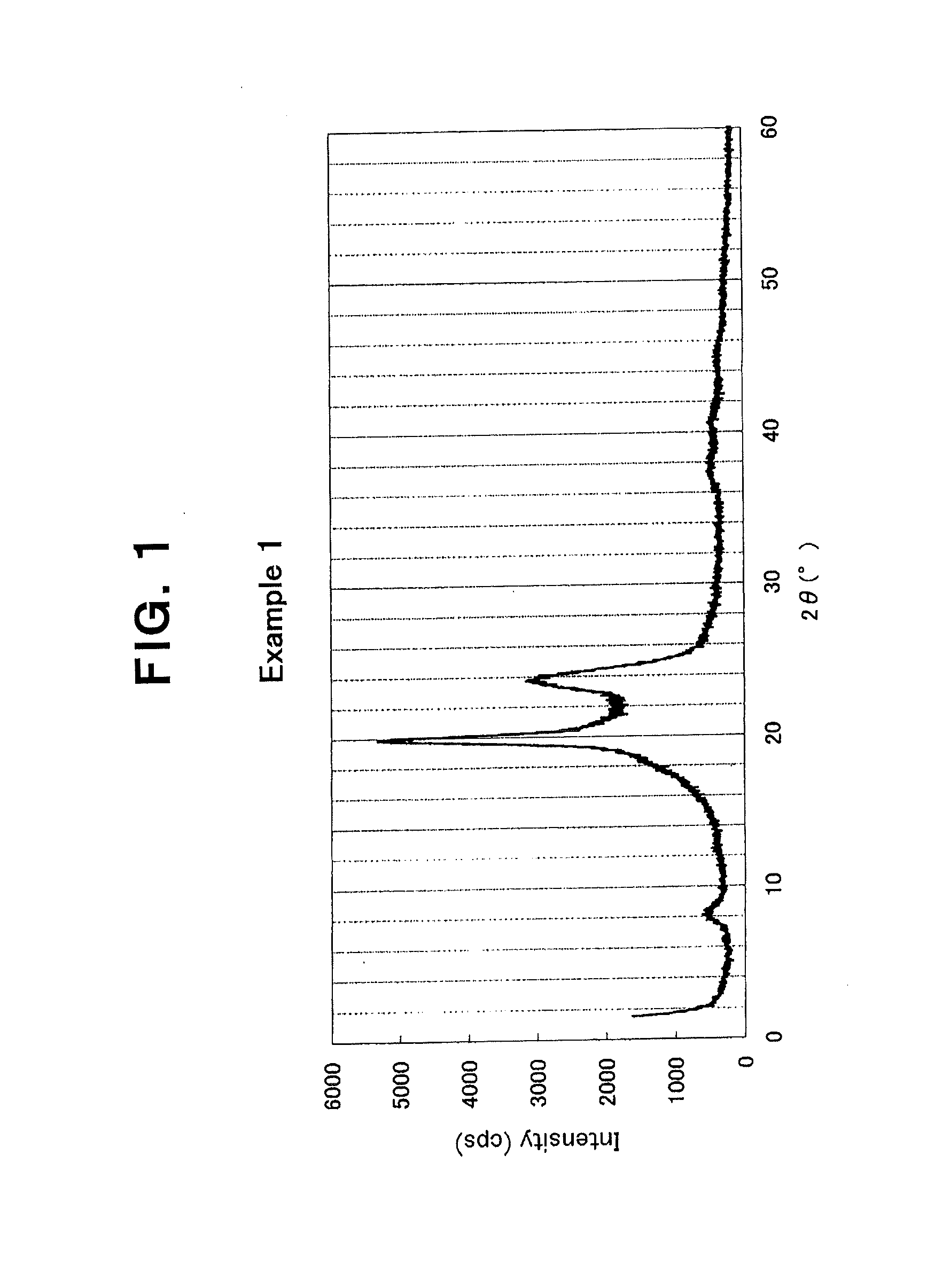Polyamide 1010 polymer particles and method for producing same
- Summary
- Abstract
- Description
- Claims
- Application Information
AI Technical Summary
Benefits of technology
Problems solved by technology
Method used
Image
Examples
reference example 1
Washing 1 of Sodium Acetate in Polyvinyl Alcohol Group
[0223]50 g of polyvinyl alcohol (supplied by Nippon Synthetic Chemical Industry Co., Ltd., G-type “Gohsenol” (registered trademark) GM-14, weight average molecular weight: 29,000, SP value: 32.8 (J / cm3)1 / 2, content of sodium acetate: 0.23 mass %) and 500 ml of methanol were added in a 1 L round bottom flask, and stirred under a room temperature condition for one hour. Thereafter, the solution was filtrated by suction filtration (filter paper 5A, 90 mmφ). Following thereto, the same operation was repeated two times, totally three times, and then, by drying it at 80° C. for 10 hours, polyvinyl alcohol little with content of sodium acetate was obtained. The quantified sodium acetate in the obtained polyvinyl alcohol was 0.05 mass %.
example 1
Method for Producing Polyamide 1010 Polymer Particles
[0224]24.5 g of polyamide 1010 (weight average molecular weight: 22,500, “Hiprolon” (registered trademark) −200, supplied by Hipro Polymers Co. Ltd.), 273.5 g of N-methyl-2-pyrrolidone as the organic solvent and 42 g of polyvinyl alcohol little with content of sodium acetate prepared in Reference Example 1 as the polymer B other than polyamide 1010 resin (weight average molecular weight: 29,000, SP value: 32.8 (J / cm3)1 / 2) were added into a 1,000 ml pressure resistant glass autoclave (supplied by Taiatsu Techno Corporation, Hyper Glaster, TEM-V1000N), after replaced with nitrogen of 99 volume % or more, heated up to 180° C., and stirred for 2 hours until the polymers were dissolved. At that time, the concentration of oxygen is 1% or less theoretically. Thereafter, 350 g of ion exchange water was dropped as the poor solvent at a speed of 2.91 g / min. through a feeding pump. At the time added with the ion exchange water of about 110 g...
example 2
Method for Producing Polyamide 1010 Polymer Particles by Adding Acid
[0227]35 g of polyamide 1010 (weight average molecular weight: 22,500, “Hiprolon” (registered trademark) −200, supplied by Hipro Polymers Co. Ltd.), 273 g of N-methyl-2-pyrrolidone as the organic solvent and 42 g of polyvinyl alcohol as the polymer B other than polyamide 1010 resin (supplied by Nippon Synthetic Chemical Industry Co., Ltd., “Gohsenol” (registered trademark) GH-20, weight average molecular weight: 44,600, SP value: 32.8 (J / cm3)1 / 2), and 0.21 g of L-tartaric acid were added into a 1,000 ml pressure resistant glass autoclave (supplied by Taiatsu Techno Corporation, Hyper Glaster, TEM-V1000N), after replaced with nitrogen of 99 volume % or more, heated up to 180° C., and stirred for 3 hours until the polymers were dissolved. At that time, the concentration of oxygen is 1% or less theoretically. Thereafter, 350 g of ion exchange water was dropped as the poor solvent at a speed of 2.91 g / min. through a fee...
PUM
| Property | Measurement | Unit |
|---|---|---|
| Temperature | aaaaa | aaaaa |
| Temperature | aaaaa | aaaaa |
| Pressure | aaaaa | aaaaa |
Abstract
Description
Claims
Application Information
 Login to View More
Login to View More - R&D
- Intellectual Property
- Life Sciences
- Materials
- Tech Scout
- Unparalleled Data Quality
- Higher Quality Content
- 60% Fewer Hallucinations
Browse by: Latest US Patents, China's latest patents, Technical Efficacy Thesaurus, Application Domain, Technology Topic, Popular Technical Reports.
© 2025 PatSnap. All rights reserved.Legal|Privacy policy|Modern Slavery Act Transparency Statement|Sitemap|About US| Contact US: help@patsnap.com



